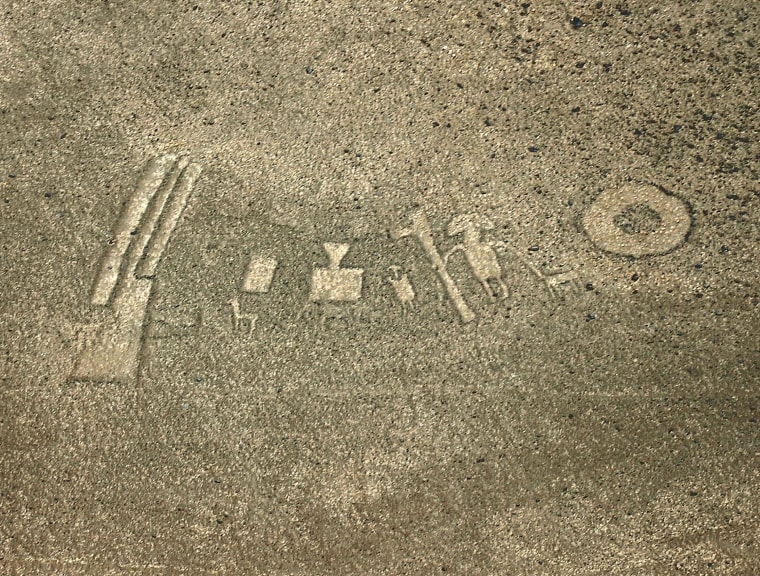A Greenpeace stunt turned the international spotlight on Peru's 1,500-year-old Nazca Lines this month, but they're not the only enigmatic (and endangered) ancient drawings in South America. Chile's Atacama Desert is also host to a set of geoglyphs that are best seen from the air.
Hundreds of pictures were created in the desert between the cities of Antofogasta and Arica, ranging from 33 to 1,000 feet (10 to 300 meters) in size. In a report from Spain's EFE news agency, Chilean archaeologist Gonzalo Pimentel lists some of the weird theories that have popped up to explain the Atacama figures — for example, that they were drawn by visiting Martians, or by Phoenicians who somehow found their way to Chile more than 3,000 years ago.
Pimentel pooh-poohs those views. The pictures are "a type of rock art linked to the ancient caravan routes that travelers left as an imprint of their passage and their identity," he told EFE.
Pimentel said the figures were made centuries ago by removing dark surface rocks to expose the lighter ground beneath, or by stacking rocks on top of each other to create contrasting shades. The fact that the Atacama Desert is one of the driest places on Earth helped preserve the drawings.
The shapes may have functioned as signposts or route markers, because they're typically found far away from the sites of ancient settlements. But the prime motivation was probably the same impulse that leads "the youth of today to make graffiti on the walls," Pimentel said.
"The figures reflect the work and the gracefulness of the pre-Columbian Andean world — of local ancestors who, in their quest to tame the wilderness, to provide it with content and culture, painted the hillsides with huge figures, as if they wanted to compete with the infinite desert," Pimentel told EFE.
